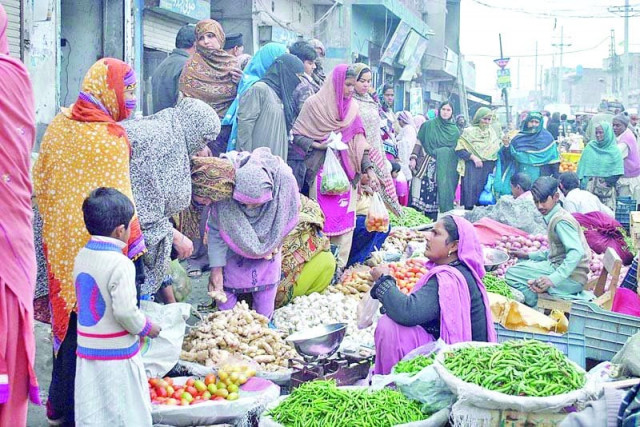Experts have identified several factors that contribute to fluctuating commodity prices, including a reduction in vegetable production, an increase in population and insufficient storage capacity. photo: APP
Small vegetable vendors have stopped selling tomatoes, peas, ginger and garlic due to high prices, as the fluctuation in vegetable prices continues, with tomatoes being sold at Rs 600 per kilogram in suburban areas of Rawalpindi.
“Tomato supply is low while demand is high, and tomatoes are no longer imported from Afghanistan,” said Sabzi Mandi Traders Union President Rawalpindi Ghulam Qadir. “Until supply is fully restored, tomato prices will not decrease and this increase will persist,” he added.
Read: Vegetable prices soar on the open market
Tensions along the Pakistani border escalated in early October, when clashes erupted after Afghanistan opened unprovoked fire in several places in Khyber Pakhtunkhwa (KP) and Balochistan, provoking a swift and forceful response from the Pakistani army. Several Afghan posts were destroyed and dozens of Afghan soldiers and militants were killed. However, a 48-hour ceasefire was agreed at the request of the Afghan government.
In the open market, tomatoes are sold at Rs 450 to Rs 500 per kilogram. Garlic reached Rs 400 per kilogram, while ginger reached Rs 750 per kilogram. Onions cost Rs 120 per kilogram and peas retail at Rs 500 per kilogram. The price of capsicum has come down to Rs 300 per kilogram, with okra also selling at the same rate. Cucumbers are available at Rs 150 per kilogram and local red carrots at Rs 200 per kilogram. Local lemons cost Rs 300 per kilogram, while coriander, which was earlier given free, now costs Rs 50 for a small bunch.
Learn more: Traders count their losses as floods devastate markets
Among fruits, apples sell for between Rs 250 and 350 per kilogram and grapes between Rs 400 and 600 per kilogram. Pomegranates cost Rs 400 per kilogram, while guavas cost Rs 170 per kilogram. A single coconut is sold for Rs400. In terms of price per dozen, sweet oranges cost between 250 and 300 rupees, and bananas cost between 150 and 200 rupees per dozen.
“Vegetables imported from India via Wagah border are cheaper than vegetables imported from Iran,” said Ghulam Mir. “The importation of white onions from Iran failed as their taste did not meet customers’ expectations,” he added.
Vegetable prices in the twin cities of Rawalpindi and Islamabad skyrocketed and remained unmanageable for several days. Suburban areas are the worst affected with tomato prices ranging between Rs 550 and Rs 600 per kilogram.
Also read: Tomato prices exceed chicken meat prices in Karachi
Earlier, Rawalpindi Deputy Commissioner Hassan Waqar Cheema had announced that he would personally monitor the wholesale auctions of vegetables in the sabzi mandi from Thursday. He said district administration officers would supervise the auction and wholesale process.
There are currently 30 price control magistrates in Rawalpindi district, and the government has started temporarily granting primary magisterial powers to officers and officials of various departments.




